Category
Recent Comments
Trending
-
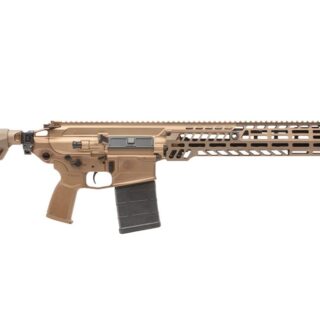 SIG Sauer MCX Virtus
Rated 0 out of 5
SIG Sauer MCX Virtus
Rated 0 out of 5$4,450.00Original price was: $4,450.00.$4,099.00Current price is: $4,099.00. -
 Heckler & Koch MR762A1
Rated 0 out of 5
Heckler & Koch MR762A1
Rated 0 out of 5$4,010.00Original price was: $4,010.00.$3,790.01Current price is: $3,790.01. -
 FN SCAR 17S
Rated 0 out of 5
FN SCAR 17S
Rated 0 out of 5$3,900.00Original price was: $3,900.00.$3,620.00Current price is: $3,620.00. -
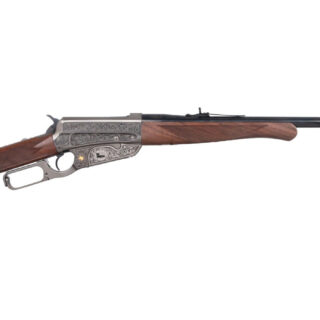 Winchester 1895 Texas Rangers 200th Anniversary Custom Grade 30-06 Springfield Rifle with Engraved Receiver and Walnut Stock
Rated 0 out of 5
Winchester 1895 Texas Rangers 200th Anniversary Custom Grade 30-06 Springfield Rifle with Engraved Receiver and Walnut Stock
Rated 0 out of 5$3,450.00Original price was: $3,450.00.$3,099.01Current price is: $3,099.01. -
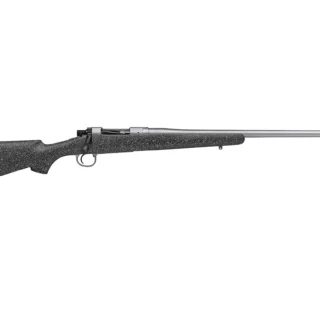 Nosler M21 Bolt Action Centerfire Rifle
Rated 0 out of 5
Nosler M21 Bolt Action Centerfire Rifle
Rated 0 out of 5$2,950.00Original price was: $2,950.00.$2,499.00Current price is: $2,499.00. -
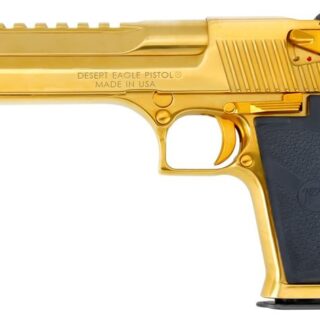 Desert Eagle Gold .50 A.E. MARK XIX TITANIUM GOLD
Rated 5.00 out of 5
Desert Eagle Gold .50 A.E. MARK XIX TITANIUM GOLD
Rated 5.00 out of 5$3,010.00Original price was: $3,010.00.$2,399.00Current price is: $2,399.00. -
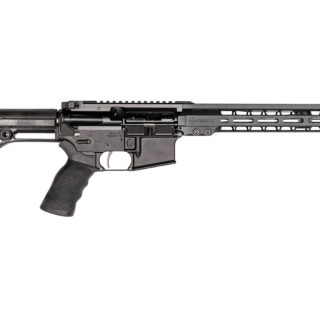 M-15 13 COMPETITION RIFLE
Rated 0 out of 5
M-15 13 COMPETITION RIFLE
Rated 0 out of 5$2,225.00Original price was: $2,225.00.$2,039.00Current price is: $2,039.00. -
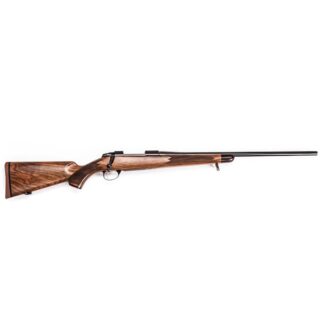 Nosler M48 Heritage Bolt Action Centerfire Rifle
Rated 0 out of 5
Nosler M48 Heritage Bolt Action Centerfire Rifle
Rated 0 out of 5$2,225.00Original price was: $2,225.00.$1,895.00Current price is: $1,895.00. -
 Daniel Defense DDM4 V7 Semi-Auto Rifle
Rated 0 out of 5
Daniel Defense DDM4 V7 Semi-Auto Rifle
Rated 0 out of 5$1,980.00Original price was: $1,980.00.$1,820.00Current price is: $1,820.00. -
 Springfield Armory Standard M1A Semi-Auto Rifle
Rated 0 out of 5
Springfield Armory Standard M1A Semi-Auto Rifle
Rated 0 out of 5$1,900.00Original price was: $1,900.00.$1,720.00Current price is: $1,720.00. -
 IWI Tavor X95 Semi-Automatic Centerfire Rifle
Rated 0 out of 5
IWI Tavor X95 Semi-Automatic Centerfire Rifle
Rated 0 out of 5$1,850.00Original price was: $1,850.00.$1,690.00Current price is: $1,690.00. -
 MARLIN 336 TACTICAL 30/30WIN
Rated 0 out of 5$1,509.99
MARLIN 336 TACTICAL 30/30WIN
Rated 0 out of 5$1,509.99
NATO Alliance consists of 30 member states from North America and Europe. Article Five of the treaty states that if an armed attack occurs against one of the member states, it should be considered an attack against all members, and other members shall assist the attacked member, with armed forces if necessary
NATO is comprised of two main parts, the political and military components. NATO Headquarters is where representatives from all the member states come together to make decisions on a consensus basis. It also offers a venue for dialogue and cooperation between partner countries and NATO member countries, enabling them to work together in their efforts to bring about peace and stability.The key elements of NATO’s military organisation are the Military Committee, composed of the Chiefs of Defence of NATO member countries, its executive body, the International Military Staff, and the military Command Structure (distinct from the Force Structure), which is composed of Allied Command Operations and Allied Command Transformation, headed respectively by the Supreme Allied Commander Europe (SACEUR) and the Supreme Allied Commander, Transformation (SACT).
NATO, which stands for the North Atlantic Treaty Organization, is a political and military alliance formed in 1949. Its primary purpose is to provide collective defense and security for its member countries against common threats, with a focus on the defense of the North Atlantic area. NATO was established in the aftermath of World War II as a response to the growing tensions between Western democracies and the Soviet Union during the early years of the Cold War.
Key points about NATO include:
- Member Countries: NATO originally had 12 founding members, including the United States, Canada, and several Western European nations. Over the years, it has expanded, and as of my last knowledge update in September 2021, it had 30 member countries.
- Collective Defense: The core principle of NATO is collective defense, as outlined in Article 5 of the NATO treaty. This article states that an armed attack against one or more NATO members is considered an attack against all members, and they are obligated to come to the aid of the attacked member.
- Military Cooperation: NATO members engage in military cooperation, joint exercises, and planning to ensure their collective defense capabilities. This includes sharing intelligence, conducting military exercises, and maintaining a standing military force.
- Political Forum: In addition to its military role, NATO serves as a political forum for member countries to consult and cooperate on security and defense issues. The North Atlantic Council is NATO’s principal political decision-making body.
- Evolution: NATO’s role and mission have evolved over the years to address changing security challenges. While it was initially focused on countering the threat of a conventional military attack during the Cold War, it has since adapted to address new security challenges, including terrorism, cyber threats, and regional conflicts.
- Partnerships: NATO also works with many non-member countries and international organizations through various partnership programs. These partnerships aim to promote stability and security in different regions of the world.
- NATO Summit: NATO holds regular summits where member leaders come together to discuss and make decisions on important security and defense issues.
Please note that the information provided is based on my knowledge as of September 2021, and there may have been developments or changes in NATO’s structure or activities since that time.
spas 12s,spas 12 for sale,gold desert eagle 50 cal,how many bullets does a glock 17 hold,bulk 6.5 creedmoor,what are rip rounds,ss198lf sale,desert eagle gold,bolt action glock,5.7×28 ammo for sale,aac 5.7x28mm,9mm rip rounds legal,cci primers for 45 acp,spas 12 cost,21 nosler,desert eagle 50 gold,,glock fbi mag release,spas shotgun price,spas-12 jurassic park,bulk 6.5 creedmore,buy spas 12,spas 12 shotgun price,beretta arx 100 for sale,gold desert eagle 50,gold desert eagle 44,franchi law 12,best glocks,best semi auto rifles 2022,50ae vs 9mm,nosler 21,cheap sks for sale
Midway Weapons
In the event that you are searching for mass ammo, you went to the right site! We highly esteem offering unquestionably the best arrangements to the most genuine shooters for mass handgun ammunition, mass rifle ammunition, mass shotgun ammunition, and mass rimfire ammunition.
Look at our huge determination of in-stock ammo. We convey every one of the most famous types and a gigantic determination of more specialty types as well. Anything you desire, we have it estimated modest and prepared to transport quick.
North Atlantic Treaty Organization (NATO, /ˈneɪtoʊ/; French: Organisation du traité de l’Atlantique nord, OTAN), also called the North Atlantic Alliance, is an intergovernmental military alliance between 31 member states – 29 European and two North American. Established in the aftermath of World War II, the organization implemented the North Atlantic Treaty, signed in Washington, D.C., on 4 April 1949.[3][4] NATO is a collective security system: its independent member states agree to defend each other against attacks by third parties. During the Cold War, NATO operated as a check on the threat posed by the Soviet Union. The alliance remained in place after the dissolution of the Soviet Union and the Warsaw Pact, and has been involved in military operations in the Balkans, the Middle East, South Asia, and Africa. The organization’s motto is animus in consulendo liber[5] (Latin for “a mind unfettered in deliberation”).
NATO’s main headquarters are located in Brussels, Belgium, while NATO’s military headquarters are near Mons, Belgium. The alliance has increased its NATO Response Force deployments in Eastern Europe[6] and the combined militaries of all NATO members include around 3.5 million soldiers and personnel.[7] Their combined military spending as of 2022 constituted around 55 percent of the global nominal total.[8] Moreover, members have agreed to reach or maintain the target defence spending of at least two percent of their GDP by 2024.[9][10]
NATO formed with twelve founding members and has added new members nine times, most recently when Finland joined the alliance on 4 April 2023, exactly 74 years after NATO’s formation.[11] Following the acceptance of its application for membership in June 2022, Sweden is anticipated to become the 32nd member, with its Accession Protocol to the North Atlantic Treaty now in the process of being ratified by the existing members.[11] In addition, NATO currently recognizes Bosnia and Herzegovina, Georgia, and Ukraine as aspiring members.[3] Enlargement has led to tensions with non-member Russia, one of the twenty additional countries participating in NATO’s Partnership for Peace programme. Another nineteen countries are involved in institutionalized dialogue programmes with NATO.
History
Main article: History of NATO
The Treaty of Dunkirk was signed by France and the United Kingdom on 4 March 1947, during the aftermath of World War II and the start of the Cold War, as a Treaty of Alliance and Mutual Assistance in the event of possible attacks by Germany or the Soviet Union. In March 1948, this alliance was expanded in the Treaty of Brussels to include the Benelux countries, forming the Brussels Treaty Organization, commonly known as the Western Union.[12] Talks for a wider military alliance, which could include North America, also began that month in the United States, where their foreign policy under the Truman Doctrine promoted international solidarity against actions they saw as communist aggression, such as the February 1948 coup d’état in Czechoslovakia. These talks resulted in the signature of the North Atlantic Treaty on 4 April 1949 by the member states of the Western Union plus the United States, Canada, Portugal, Italy, Norway, Denmark, and Iceland.[13] Canadian diplomat Lester B. Pearson was a key author and drafter of the treaty.[14][15][16]

The North Atlantic Treaty was largely dormant until the Korean War initiated the establishment of NATO to implement it with an integrated military structure. This included the formation of Supreme Headquarters Allied Powers Europe (SHAPE) in 1951, which adopted many of the Western Union’s military structures and plans,[17] including their agreements on standardizing equipment and agreements on stationing foreign military forces in European countries. In 1952, the post of Secretary General of NATO was established as the organization’s chief civilian. That year also saw the first major NATO maritime exercises, Exercise Mainbrace and the accession of Greece and Turkey to the organization.[18][19] Following the London and Paris Conferences, West Germany was permitted to rearm militarily, as they joined NATO in May 1955, which was, in turn, a major factor in the creation of the Soviet-dominated Warsaw Pact, delineating the two opposing sides of the Cold War.[20]
The building of the Berlin Wall in 1961 marked a height in Cold War tensions, when 400,000 US troops were stationed in Europe.[21] Doubts over the strength of the relationship between the European states and the United States ebbed and flowed, along with doubts over the credibility of the NATO defence against a prospective Soviet invasion – doubts that led to the development of the independent French nuclear deterrent and the withdrawal of France from NATO’s military structure in 1966.[22][23] In 1982, the newly democratic Spain joined the alliance.[24]
The Revolutions of 1989 in Europe led to a strategic re-evaluation of NATO’s purpose, nature, tasks, and focus on the continent. In October 1990, East Germany became part of the Federal Republic of Germany and the alliance, and in November 1990, the alliance signed the Treaty on Conventional Armed Forces in Europe (CFE) in Paris with the Soviet Union. It mandated specific military reductions across the continent, which continued after the collapse of the Warsaw Pact in February 1991 and the dissolution of the Soviet Union that December, which removed the de facto main adversaries of NATO.[25] This began a drawdown of military spending and equipment in Europe. The CFE treaty allowed signatories to remove 52,000 pieces of conventional armaments in the following sixteen years,[26] and allowed military spending by NATO’s European members to decline by 28 percent from 1990 to 2015.[27] In 1990, several Western leaders gave assurances to Mikhail Gorbachev that NATO would not expand further east, as revealed by memoranda of private conversations.[28][29][30][31] However, the final text of the Treaty on the Final Settlement with Respect to Germany, signed later that year, contained no mention of the issue of eastward expansion.

In the 1990s, the organization extended its activities into political and humanitarian situations that had not formerly been NATO concerns.[32] During the breakup of Yugoslavia, the organization conducted its first military interventions in Bosnia from 1992 to 1995 and later Yugoslavia in 1999.[33] These conflicts motivated a major post-Cold War military restructuring. NATO’s military structure was cut back and reorganized, with new forces such as the Headquarters Allied Command Europe Rapid Reaction Corps established.
Politically, the organization sought better relations with the newly autonomous Central and Eastern European states, and diplomatic forums for regional cooperation between NATO and its neighbours were set up during this post-Cold War period, including the Partnership for Peace and the Mediterranean Dialogue initiative in 1994, the Euro-Atlantic Partnership Council in 1997, and the NATO–Russia Permanent Joint Council in 1998. At the 1999 Washington summit, Hungary, Poland, and the Czech Republic officially joined NATO, and the organization also issued new guidelines for membership with individualized “Membership Action Plans“. These plans governed the subsequent addition of new alliance members.[34] The election of French president Nicolas Sarkozy in 2007 led to a major reform of France’s military position, culminating with the return to full membership on 4 April 2009, which also included France rejoining the NATO Military Command Structure, while maintaining an independent nuclear deterrent.[23][35][36]
Article 5 of the North Atlantic treaty, requiring member states to come to the aid of any member state subject to an armed attack, was invoked for the first and only time after the September 11 attacks,[37] after which troops were deployed to Afghanistan under the NATO-led ISAF. The organization has operated a range of additional roles since then, including sending trainers to Iraq, assisting in counter-piracy operations,[38] and in 2011 enforcing a no-fly zone over Libya in accordance with UN Security Council Resolution 1973.
Russia’s annexation of Crimea led to strong condemnation by all NATO members,[39] and was one of the seven times that Article 4, which calls for consultation among NATO members, has been invoked. Prior times included during the Iraq War and Syrian Civil War.[40] At the 2014 Wales summit, the leaders of NATO’s member states formally committed for the first time to spend the equivalent of at least two percent of their gross domestic products on defence by 2024, which had previously been only an informal guideline.[41] At the 2016 Warsaw summit, NATO countries agreed on the creation of NATO Enhanced Forward Presence, which deployed four multinational battalion-sized battlegroups in Estonia, Latvia, Lithuania, and Poland.[42] Before and during the 2022 Russian invasion of Ukraine, several NATO countries sent ground troops, warships and fighter aircraft to reinforce the alliance’s eastern flank, and multiple countries again invoked Article 4.[43][44][45] In March 2022, NATO leaders met at Brussels for an extraordinary summit which also involved Group of Seven and European Union leaders.[46] NATO member states agreed to establish four additional battlegroups in Bulgaria, Hungary, Romania, and Slovakia,[42] and elements of the NATO Response Force were activated for the first time in NATO’s history.[47]
As of June 2022, NATO had deployed 40,000 troops along its 2,500-kilometre-long (1,550 mi) Eastern flank to deter Russian aggression. More than half of this number have been deployed in Bulgaria, Romania, Hungary, Slovakia, and Poland, which five countries muster a considerable combined ex-NATO force of 259,000 troops. To supplement Bulgaria’s Air Force, Spain sent Eurofighter Typhoons, the Netherlands sent eight F-35 attack aircraft, and additional French and US attack aircraft would arrive soon as well.[48]
Introduction
Founded in 1949 as a bulwark against Soviet aggression, the North Atlantic Treaty Organization (NATO) remains the pillar of U.S.-Europe military cooperation. An expanding bloc of NATO allies has taken on a broad range of missions since the close of the Cold War, many well beyond the Euro-Atlantic region, in countries such as Afghanistan and Libya.
Russia’s unprovoked invasion of Ukraine, a nonmember, in early 2022 has shaken Europe’s security architecture and prompted a major reevaluation of NATO members’ foreign policies and defense commitments. The threat from Russia has generated the greatest tensions with the alliance in the post-Cold War era. It is driving up defense spending and has pushed some longtime NATO partners, namely Finland and Sweden, to seek full membership. Finland acceded to the alliance in April 2023.
RELATED
Why NATO Has Become a Flash Point With Russia in Ukraine
Ukraine: Conflict at the Crossroads of Europe and Russia
A Post–Cold War Pivot
After the demise of the Soviet Union in 1991, Western leaders intensely debated the direction of the transatlantic alliance. Some in the Bill Clinton administration initially opposed expanding NATO, wary it would upset relations with President Boris Yeltsin’s fragile government in Russia and complicate other U.S. foreign policy objectives, such as nuclear arms control. Others favored expansion as a way to extend NATO’s security umbrella to the east and consolidate democratic gains in the former Soviet bloc.
European members were also split on the issue. The United Kingdom feared NATO’s expansion would dilute the alliance, while France believed it would give NATO (and the United States) too much influence. Paris hoped to integrate former Soviet states via European institutions.
As a first step, Clinton chose to develop a new NATO initiative called the Partnership for Peace (PfP), which would be open to all former Warsaw Pact members, as well as non-European countries. Seeing this nonmembership framework as a means to allay some of Russia’s concerns about alliance expansion, NATO launched PfP at its annual summit in 1994. More than two dozen countries, including Georgia, Russia, and Ukraine, joined in the following months.
Why NATO Still Matters After All These Years
However, Clinton soon began speaking publicly [PDF] about expanding NATO’s membership, saying in the Czech Republic just days after the launch of PfP that “the question is no longer whether NATO will take on new members but when and how.” Yeltsin warned Western leaders at a conference later that year that “Europe, even before it has managed to shrug off the legacy of the Cold War, is risking encumbering itself with a cold peace.”
Beyond Collective Defense
Many U.S. officials felt that a post–Cold War vision for NATO needed to look beyond its core defense commitments—Article V of the North Atlantic Treaty states that “an armed attack against one or more [member states] in Europe or North America shall be considered an attack against them all”—and focus on confronting challenges outside its membership. “The common denominator of all the new security problems in Europe is that they all lie beyond NATO’s current borders,” said influential U.S. Senator Richard Lugar in a 1993 speech.
Which countries are in Nato?
Nato – the North Atlantic Treaty Organization – was formed in 1949 by 12 countries, including the US, UK, Canada and France.
The organisation has two official languages, English and French. In French, the alliance is known as Otan, Organisation du Traité de l’Atlantique Nord.
It currently has 31 members across Europe and North America.
They agree to help one another if they are attacked.
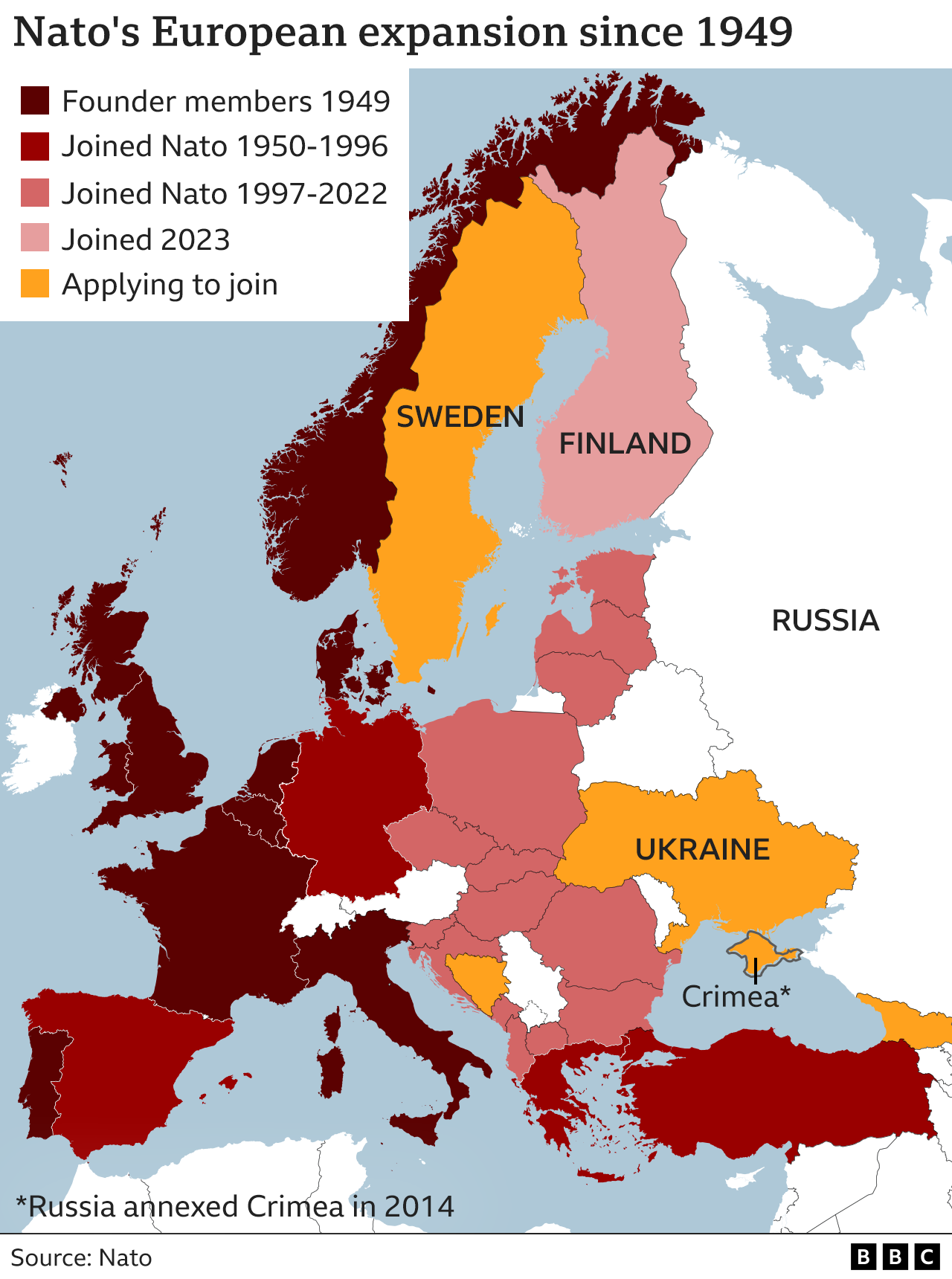
Nato’s original goal was to block Soviet expansion in Europe after World War Two.
After the Soviet Union’s collapse in 1991, many Eastern European countries joined the alliance: Albania, Bulgaria, Hungary, Poland, the Czech Republic, Slovakia, Romania, Lithuania, Latvia and Estonia.
Will Ukraine join Nato?
Nato said in 2008 that Ukraine could join at a future date, but declined its September 2022 request for “fast-track” membership.
Under article 5 of Nato’s charter, if one member is attacked, the others must come to its defence.
Were Ukraine to join during the current conflict with Russia, all Nato member countries would also have to declare war on Russia.
At the Vilnius summit in July, Nato said that it will invite Ukraine to become a member “when allies agree and conditions are met”.
It also said that Ukraine could skip a step in the entry process called the Membership Action Plan.
However, Nato has not set out a timeframe for Ukraine’s entry.
Ukrainian President Zelensky accepts his country cannot join Nato while it is at war with Russia, but wants it to happen as soon as possible after fighting ends: “Nato will give Ukraine security. Ukraine will make the alliance stronger.”
Russia has consistently and strongly opposed the idea of Ukraine joining Nato, fearing it would bring the alliance’s forces too close to its own territory.
Which other countries are joining Nato?
Sweden applied to join Nato in April 2022, along with Finland.
Finland has a 1,340km (832 mile) land border with Russia. Both countries were concerned about growing Russian aggression following the Ukrainian invasion.

Finland joined Nato in April 2023, but for many months Turkey and Hungary refused to approve Sweden’s application.
Turkey accused it of hosting its enemies, including pro-Kurdish groups.
However, before the latest summit, Nato secretary-general Jens Stoltenberg said that Sweden had addressed “Turkey’s legitimate security concerns”, and that the Turkish government would ask its parliament to approve membership.
He said Hungary would do the same.
However, it is not known when the Turkish and Hungarian parliaments will vote, or when Sweden might officially be admitted.
- Sweden hails historic step as Turkey backs Nato bid
- How Sweden and Finland went from neutral to Nato
What weapons are Nato countries supplying to Ukraine?
The US is sending Ukraine cluster bombs – weapons containing so-called “bomblets” which explode across a wide area.
The bombs are controversial, because of the harm they might do to civilians.
The US is also supplying Ukraine with 31 Abrams tanks. The UK has sent 14 Challenger 2 tanks, while Germany and other Nato countries have donated dozens of Leopard 2 tanks.
The US and UK have provided missiles such as Himars, which have been used to hit targets behind Russia’s front lines.
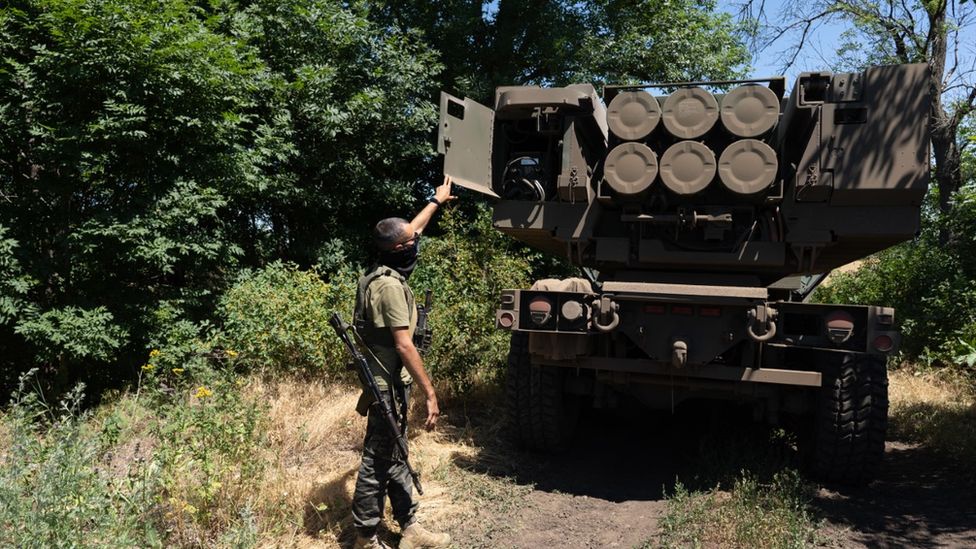
Nato countries are also supplying air defence systems to shoot down Russian cruise missiles and drones over Ukraine.
The US has said it will support the delivery of American fighter jets, such as F-16s, to Ukraine by Nato allies. Nato countries are teaching Ukrainian pilots how to fly them.
However, the US is not providing its longer-range missiles, called Advanced Tactical Missile Systems. It thinks these could be used to attack targets inside Russia – which could provoke a direct conflict between Russia and the West.
For the same reason, Nato countries are not sending troops to Ukraine, nor using their air forces to impose a no-fly zone.
At the Nato summit, the G7 members ratified a wide-ranging security pact with Ukraine, which will deliver more defence equipment, training and intelligence sharing.
10 THINGS YOU NEED TO KNOW ABOUT NATO
- Collective defence: The North Atlantic Treaty Organization (NATO) was founded in 1949 and is a group of 31 countries from Europe and North America that exists to protect the people and territory of its members. The Alliance is founded on the principle of collective defence, meaning that if one NATO Ally is attacked, then all NATO Allies are attacked. For example, when terrorists attacked the United States on 9/11 2001, all NATO Allies stood with America as though they had also been attacked.
- Fighting Terrorism: NATO plays an important role in fighting terrorism. Through NATO Mission Iraq, we are advising and assisting Iraqi security forces and institutions to stabilise their country, fight terrorism and prevent the return of Daesh. NATO is also a full member of the Global Coalition to Defeat ISIS, and our AWACS surveillance aircraft have played an important supporting role. For nearly 20 years, NATO helped to ensure Afghanistan did not become a safe haven for international terrorists. In Naples, NATO has set up a ‘Hub for the South’ to help Allies tackle the threat of terrorism.
- Support for Ukraine: NATO stands in full solidarity with the people of Ukraine as they defend their country against Russia’s war of aggression. Our members are providing unprecedented support to help Ukraine uphold its right to self-defence, which is enshrined in the UN Charter. As an organisation, NATO is providing non-lethal support including fuel, winter clothing and generators. Over the longer-term, we will support Ukraine to transition from Soviet-era military equipment to modern NATO equipment, boost interoperability and further strengthen its defence institutions.
- Working with partners: Because threats and challenges like terrorism, migration, climate change and cyber-attacks know no borders, NATO is committed to cooperation with its global partners. We work with over 40 partner countries around the world, as well as organisations such as the United Nations, the European Union, the Organization for Security and Cooperation in Europe and the African Union, to spread stability and security.
- Troops and Equipment: Whenever NATO carries out a mission, our members commit troops and equipment to be placed under NATO command. These become known as “NATO forces.” The only military equipment that NATO owns is a fleet of AWACS (Airborne Warning and Control) surveillance aircraft and several Global Hawk surveillance drones.
- NATO’s Command Structure: With many different militaries working together, having a clear chain of command is vital. Military and civilian personnel from all member states work together every day within NATO’s ‘Command Structure.’ This includes two top-level Strategic Commands: Allied Command Operations, based in Mons, Belgium; and Allied Command Transformation, based in Norfolk in the United States. Our commands enable us to run our missions, train our forces and act in a crisis.
- Defence Spending: At the Wales Summit in 2014, NATO Allies pledged to invest more and better in defence – to stop the cuts, move towards spending 2% of GDP on defence by 2024, and to spend 20% of that on major equipment. We are making progress. Since then, European Allies and Canada have spent 350 billion US dollars more on defence. This money goes into improving Allied armed forces that keep our countries safe.
- NATO funding: Every NATO country contributes to the costs of running the Alliance, based on a cost-share formula derived from Gross National Income. This covers the costs of NATO’s operations and missions, facilities, Command Structure and jointly-owned equipment, like its surveillance drones. NATO’s common funding amounts to approximately three billion euros annually, or around 0.3% of total Allied defence spending.
- Joining NATO: The Open Door Policy is a founding principle of NATO. This means that any country in Europe is free to join NATO if it is prepared to meet the standards and obligations of membership, contributes to the security of the Alliance, and shares NATO’s values of freedom, democracy and the rule of law. Since 1949, NATO’s membership has grown from 12 to 31 countries. In April 2023, we welcomed Finland as our 31st member.
- Cyber Defence: Cyber-attacks are becoming more common, sophisticated and damaging, making cyber defence a top priority for NATO. In fact, NATO recognises cyberspace as an ‘operational domain’ – just as land, sea, air, or space. NATO helps Allies to boost their cyber defences by sharing information about threats, investing in education and training, and through exercises. NATO also has cyber defence experts that can be sent to help Allies under attack.
What is Nato’s defence plan against Russia?
Nato commanders have agreed a new plan for countering Russian aggression.
It spells out how forces should be deployed if Russia attacks in any of three zones: the Arctic and north Atlantic; central Europe; or the Mediterranean region.
Nato currently has 40,000 troops which can be mobilised at short notice. There is a proposal to have 300,000 troops ready for action within 30 days.
Nato also wants member countries to update their military equipment, to stockpile more ammunition, and to spend a minimum of 2% of their GDP on defence.
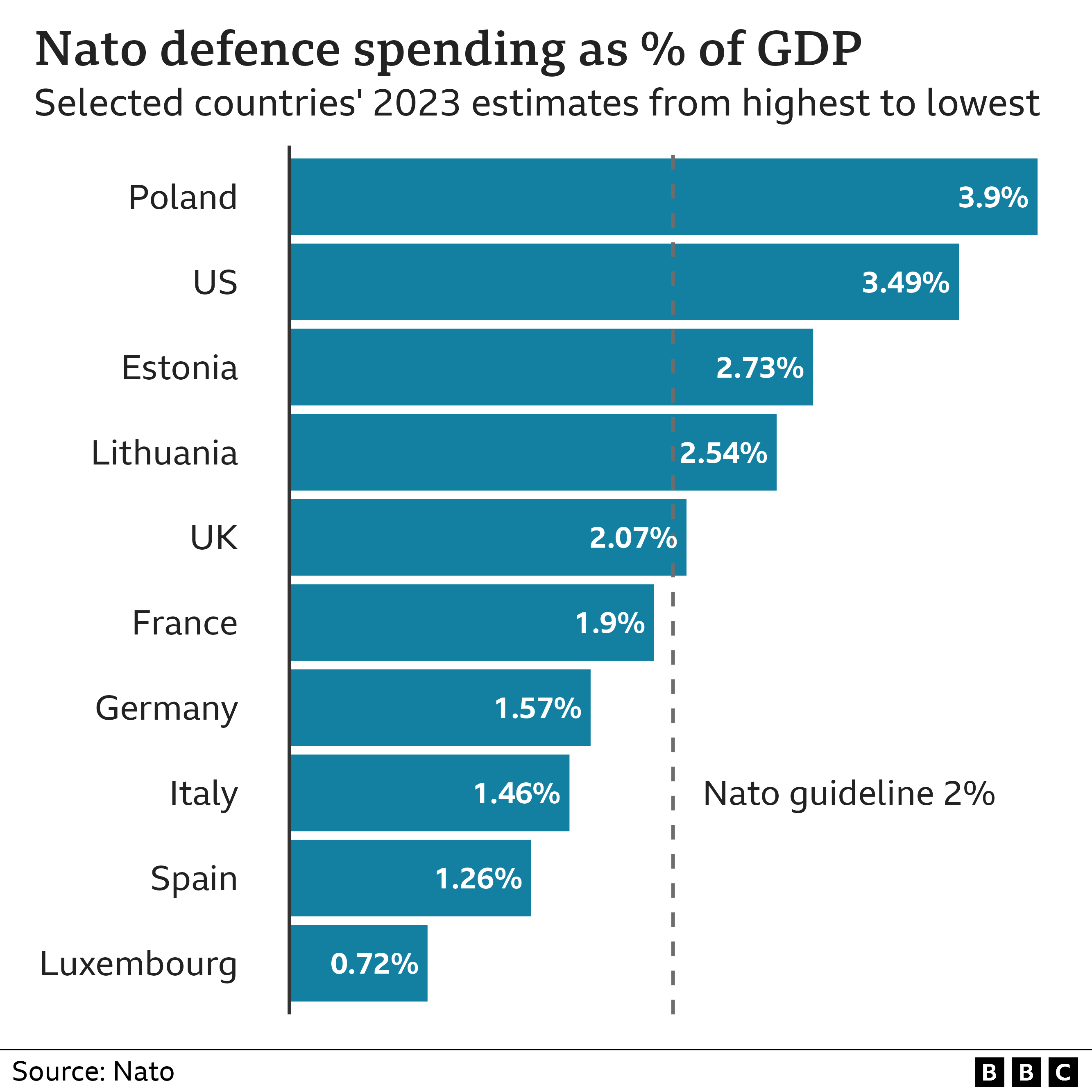
Leave a Reply